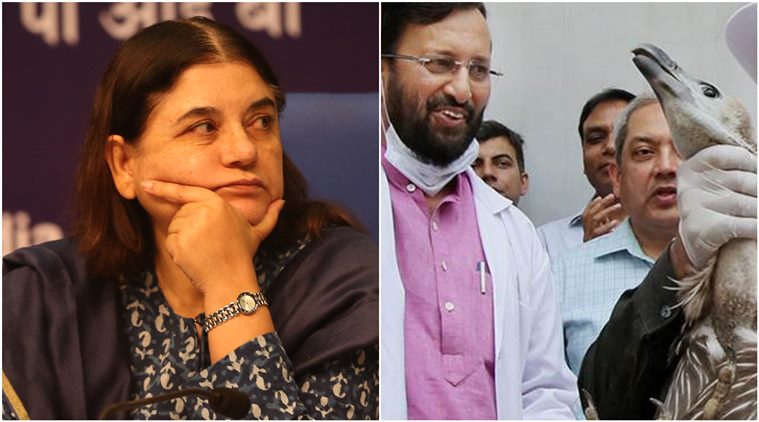Jay Mazoomdaar is an investigative reporter focused on offshore finance, equitable growth, natural resources management and biodiversity conservation. Over two decades, his work has been recognised by the International Press Institute, the Ramnath Goenka Foundation, the Commonwealth Press Union, the Prem Bhatia Memorial Trust, the Asian College of Journalism etc. Mazoomdaar’s major investigations include the extirpation of tigers in Sariska, global offshore probes such as Panama Papers, Robert Vadra’s land deals in Rajasthan, India’s dubious forest cover data, Vyapam deaths in Madhya Pradesh, mega projects flouting clearance conditions, Nitin Gadkari’s link to e-rickshaws, India shifting stand on ivory ban to fly in African cheetahs, the loss of indigenous cow breeds, the hydel rush in Arunachal Pradesh, land mafias inside Corbett, the JDY financial inclusion scheme, an iron ore heist in Odisha, highways expansion through the Kanha-Pench landscape etc. ... Read More
Simply put: Why culling is not a ‘lust for killing’, it is conservation
Union Ministers Maneka Gandhi and Prakash Javadekar faced off last week over the culling of wild animals. JAY MAZOOMDAAR explains the key issues.
 Union Ministers Maneka Gandhi (L), Prakash Javadekar
Union Ministers Maneka Gandhi (L), Prakash Javadekar
What is culling?
Selection, says the dictionary. In the wild, it is the process of weeding out of the weak — through starvation, disease and predation. It is nature’s way of controlling population and maintaining the robustness of a stock.
A population boom makes individuals compete for food and safety, and the weaker ones lose out, leaving a smaller population of more able individuals. As a result, no forest supports more herbivores than can possibly forage adequately, and more carnivores than those herbivores can provide for.
In the post-conservation era, however, human intervention became necessary for the management of wildlife populations through controlled hunting, which is now referred to as culling.
And why did that become necessary?
The wild herbivore population has multiplied in many areas — the result of bans or restrictions on hunting, loss of natural predators, availability of non-forest food sources (cropland, garbage dumps), etc. When too many wild animals compete with humans for resources, posing a threat to life and livelihood, it is considered necessary to restrict or reduce such populations through controlled culling.
[related-post]
Watch Video: What’s making news
Is it a global phenomenon?
Pretty much. In the US, some areas require seasonal culling to ease pressure on livestock feed. In parts of Africa, culling has been used for commercial harvesting. Australia culls feral cats to protect native species. It also culls kangaroos, its iconic species.
Why are animal welfare activists opposed to it?
The primary objection is ethical. The human population boom, they argue, is the biggest drain on the planet’s resources. So if we don’t consider culling humans, we do not have the right to cull other species. Wildlife are forced out of forests, they claim, to raid cropland because forests are being encroached upon by people. They also allege that so-called controlled culling frequently leads to free-for-all shooting sprees, and permitting a cull actually creates a conducive atmosphere for the poaching mafia to move in.
So, aren’t these valid points?
The ethical argument cannot, of course, be rejected offhand.
Loss of forestland to mines, industry, agriculture, roads, railways, canals etc. is a big trigger for man-animal conflict. But while loss of forest cover creates flashpoints between people and large species such as elephants and tigers, crop-raiding by smaller herbivores becomes acute primarily due to a local population boom. Moreover, even the best protected forests do not offer as high-nutrient options as, say, standing wheat or maize.
It is true that culling drives are often not well monitored. But that can’t be a reason to stop them altogether. Also, it is specious to claim that time-bound, limited permissions to cull create an atmosphere for poaching. Most of these cropland areas may not host commercially lucrative wildlife species that can be targeted in the guise of culling.
Does the welfare lobby offer any solution to conflict?
They argue that man-animal conflict can be controlled through non-invasive means, including fencing crop fields, planting chilli around cropland, creating buffer areas between croplands and the forest’s edge, selecting non-edible crops, providing adequate and regular compensation for crop loss, etc.
Do these measures work?
Not always. Fencing merely shifts conflict to the next accessible cropland. Used extensively, it creates an enclosure for wildlife. Even selection of crops that traditionally repelled animals does not seem to work any longer. For example, farmers in Sirmour, Himachal Pradesh, now complain that monkeys raid garlic fields that they avoided until recently.
Other measures are mostly long-term and can keep a check on conflict only in situations where crop damage is still reasonable. But in pockets where the situation is already out of hand, the only option is often to reduce the number of habitual crop-raiders.
Isn’t that cruel and against our culture?
Killing should only be the last resort, and people themselves do not ask for such extreme steps until it seems their own survival is at stake. A huge rural population in India still has a cultural bond with nature. It is because of them, and not so much the city activists, that a sizeable population of wildlife still survives. It is counter-productive to test their tolerance with unreasonable demands.
But is culling conservation?
Very much so. By law, wildlife are protected because they are too few and require protection. But when certain pockets see a population boom in herbivores, farmers cannot wait for predators to reoccupy such areas and carry out population control for them. The absence of lawful intervention often triggers retaliation by illegal means. In anger, farmers may indiscriminately target wildlife, including those that may not be causing any problem.
So is it basically animal welfare versus wildlife conservation?
Both groups are pro-nature, but the dichotomy is obvious. Conservationists are concerned about the integrity of the ecosystem and the future of entire species. Animal welfare activists believe that every individual animal is ethically indispensable, even at the cost of putting entire species at risk.
The two perspectives can meet halfway. With, say, tigers, the occasional ‘problem animal’ can be packed off to a zoo — it makes no difference to wildlife conservation but satisfies welfare concerns. But it may not feasible to deal with hundreds of nilgai, monkeys or boars by any means other than culling.
The bottomline?
Even Noah’s ark could not save every individual animal. This generation will be lucky if it can save the species.
Photos




- 01
- 02
- 03
- 04
- 05


































